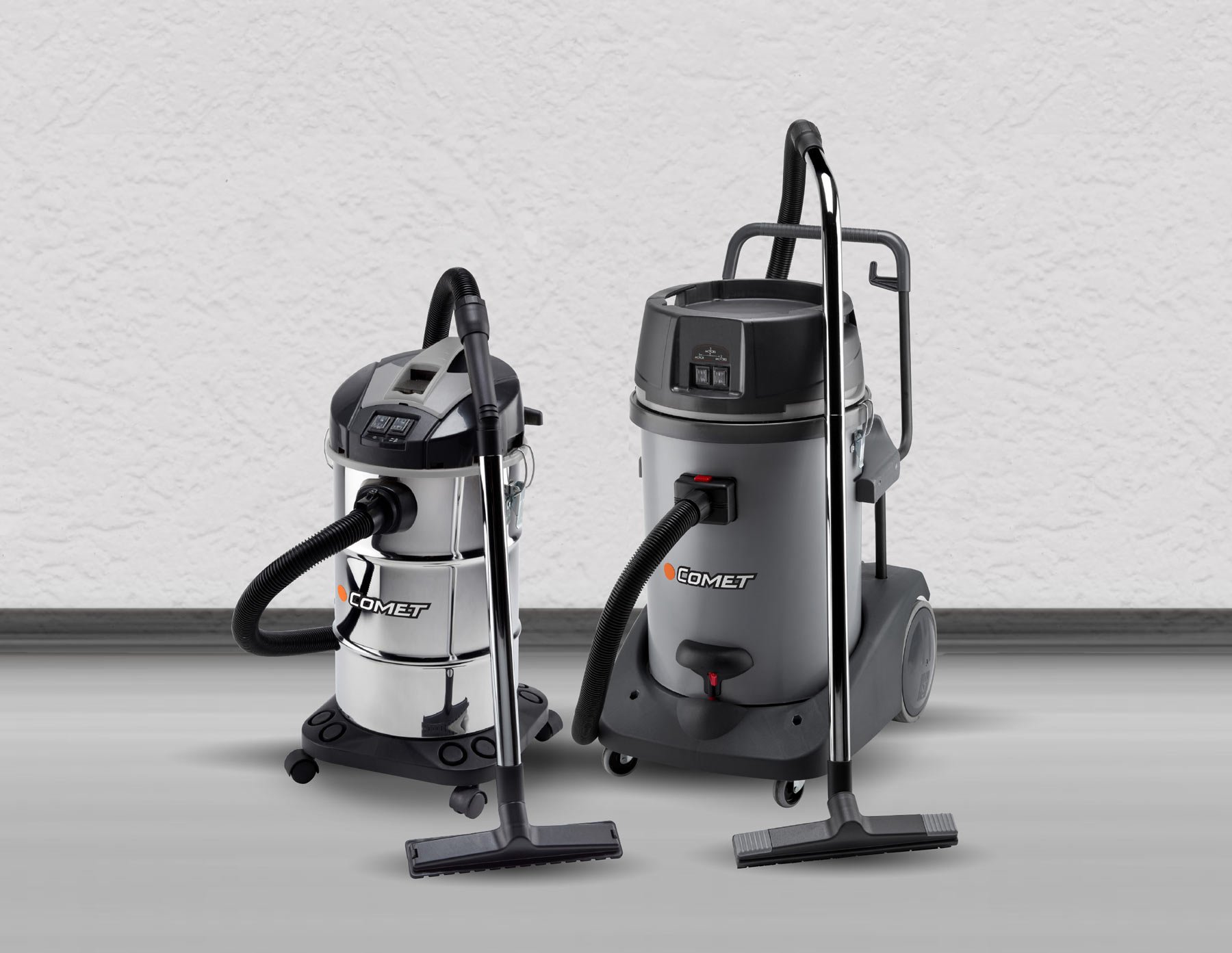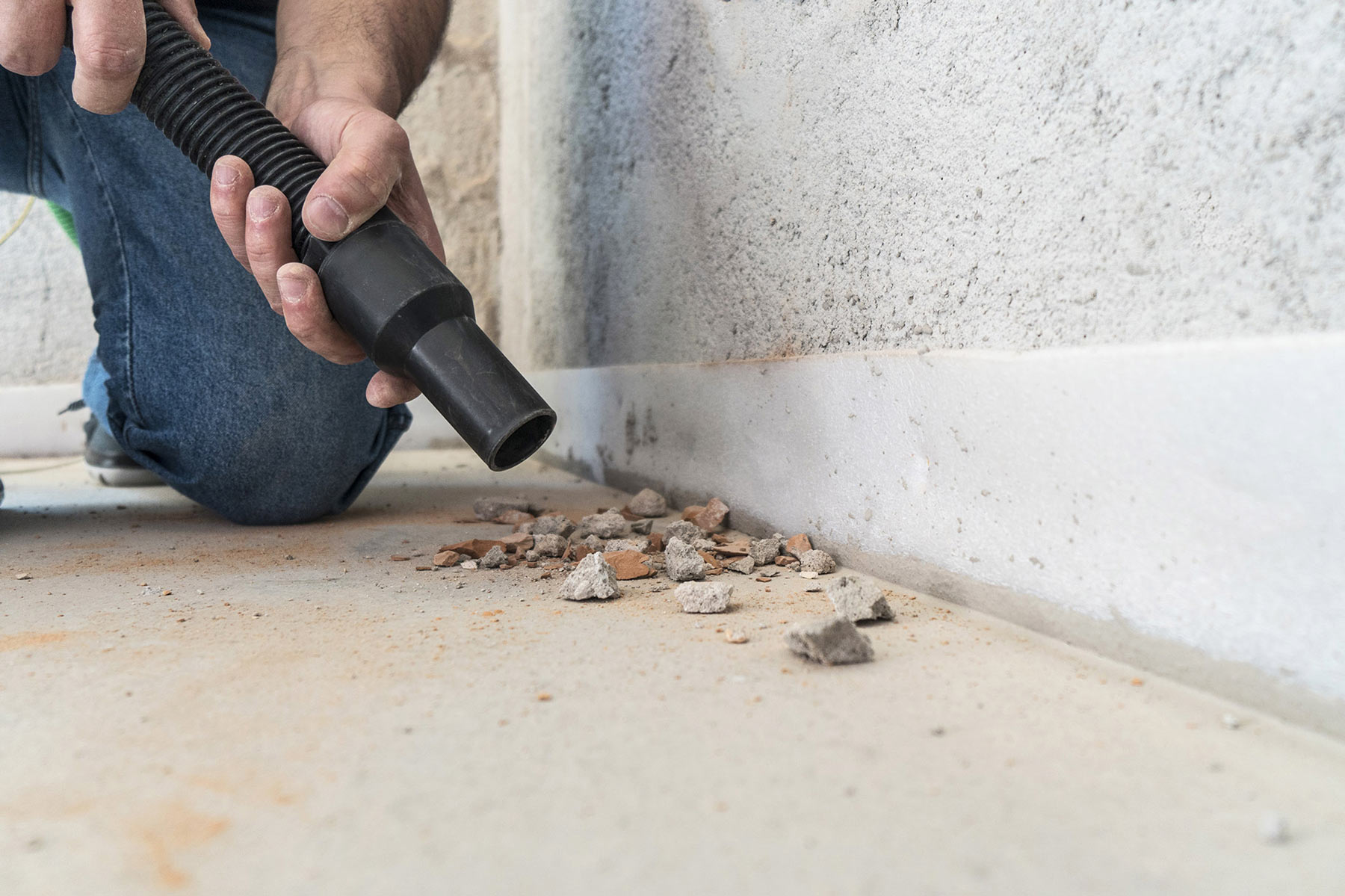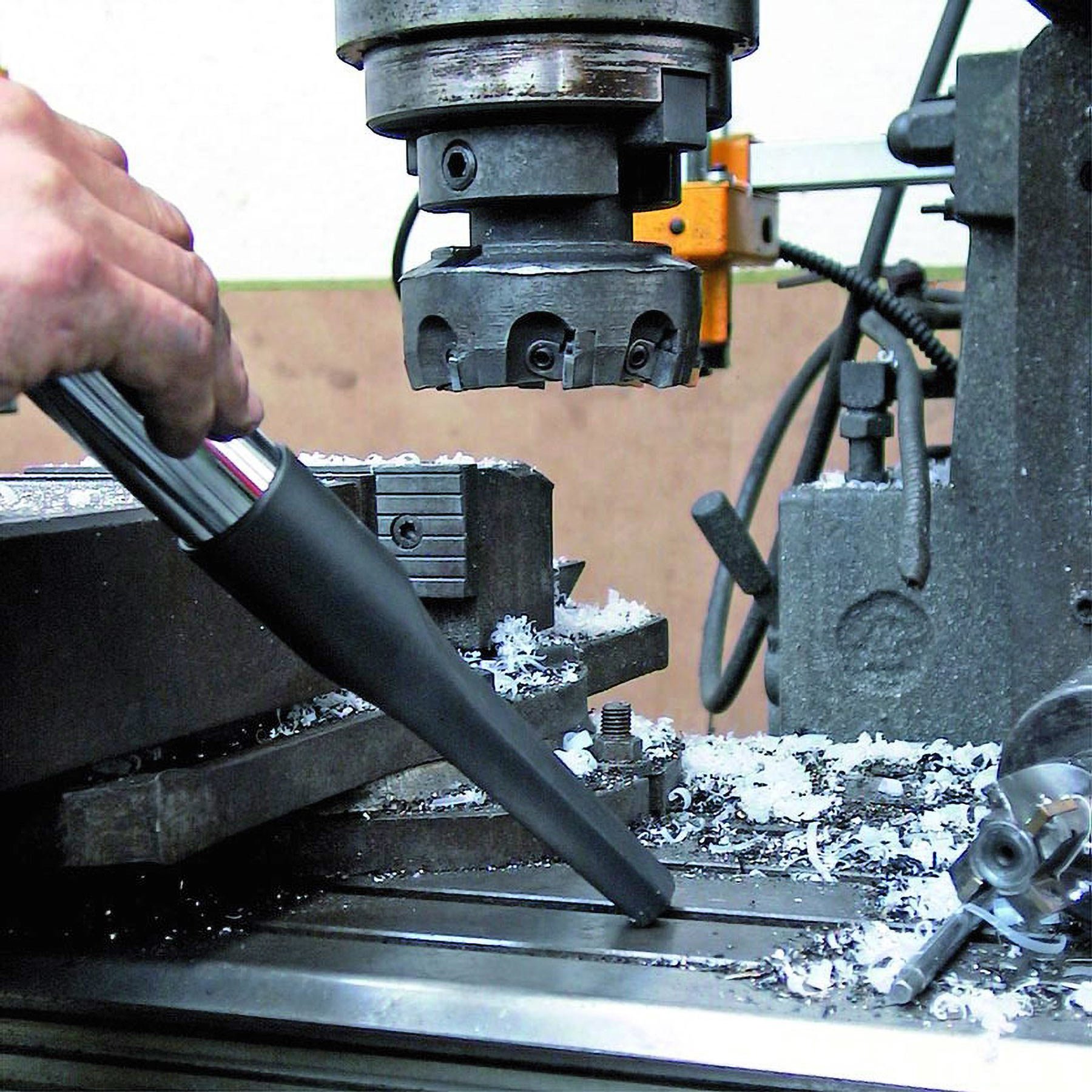It is of the utmost importance to use a vacuum cleaner to keep your workplace free of residues and dirt when working.
Just as a home vacuum cleaner is useful for cleaning dust and crumbs from floors, a vacuum cleaner is a machine capable of removing dirt and coarse debris from floors and surfaces, which can be dangerous if left in the working environment.
The vacuum cleaners can be used in any sector: supermarkets, schools, hospitals, gyms, hotels, bars, restaurants, offices , car washes, public transport , mechanical or engineering workshops , factories, construction sites and industrial plants.
HOW A VACUUM CLEANER WORKS
Invented at the beginning of the last century, the vacuum cleaner operates with one or more motors creating a vacuum of air to suck, through a flexible hose, dusts, liquids and other particles of various materials, to convey and keep them inside a closed container.
The main components of a vacuum cleaner are generally divided into four groups, with specific characteristics for liquid suction machines:
- Head: composed of one or more electric motors to power turbines that rotate to create the vacuum effect needed to suck the material into a container.
- Filtering system: composed of a system of filters of various types - bag, fabric, cartridge or Hepa - which separate dry dust from air, it is the component through which the dry dust is separated from air, keeping the former in the collecting container , in order to reintroduce clean air into the environment.
The wet vacuum cleaner may also have no filtration and separate air from liquids by gravity inside the collecting container.
- Collecting container: made of plastic or stainless steel, it is the casing where the material sucked by the machine is collected under vacuum.
- Suction hose: made with different lengths, diameters and materials, it is connected at one end to the collecting container while, at the other end, it is operated by an operator to collect dust and dirt from floors and surfaces. On the operator side it can therefore be equipped with various types of nozzles and accessories, depending on the material to be removed. Some models of hose are flexible, or equipped with a rigid rod to facilitate its use, others can be rigid and curved, to allow the operator to reach the floor while maintaining an upright position.
When the vacuum cleaner is turned on, its motor rotates the turbine which creates a vacuum inside the container: the operator moves the suction hose and brings the nozzle closer to what is to be removed. The vacuum effect sucks anything inside the hose and holds it in the special container, which will then be emptied to properly dispose of dust, liquids and collected waste.
Finally, to facilitate its movement, the main body of the machine is supported by solid or swivel wheels depending on the models available in the market.
DISCOVER THE PREMIUM SERIES OF COMET VACUUM CLEANERS AND OUR PROFESSIONAL LINE
WHICH TYPES OF VACUUM CLEANERS EXIST
The suction machines are mainly divided into two types:
- Vacuum cleaner: to suck dry dust and fine particles. They can be equipped with a polyester fabric filtering system to reduce dusts above 25 microns, while an absolute Hepa filter can reach the grade of 99.99% with dusts of 03 microns.
By developing good suction power and high filtration capacity, they greatly reduce dust dispersion into the environment and are therefore ideal for use in hotels, community spaces and offices.
- Wet and Dry Vacuum Cleaners: to suck dry dust and liquid materials. In this case, the filtering system is almost null and void and is replaced by a safety system that interrupts suction when the collecting container reaches the filling limit level.
By developing high suction power, they are suitable for use in all professional and industrial environments to suck the machining waste.
- Ash Vacuum Cleaners: to suck hot and cold ashes from barbecues, pellet stoves, fireplaces and wood burning stoves, without dusting and very quickly. These vacuum cleaners are mainly used in the home.
- Multifunction 4 in 1: these vacuum cleaners have a wet & dry vacuum cleaner function, ash vacuum cleaner function and even blower, always used in home environments.
Some professional vacuum cleaners are also equipped with the “carpet washing” function for better cleaning in hotels, conference rooms, etc..

FOR A COMPLETE PROFESSIONAL CLEANING READ ALSO:
The professional sweeper: clean floors in just one sweep
How to ensure the hygiene of floors with a professional scrubber-dryer
HOW TO CHOOSE THE VACUUM CLEANER
The choice for the right vacuum cleaner depends, first of all, on the use to be made of it, frequency of use, environment to be cleaned and type of dirt to be removed. Starting from these parameters, therefore, it is possible to evaluate a series of characteristics, such as structure and weight, suction power, dirt collecting system, type of filters, noise and accessories.
If you need to clean up a small space, such as an office, or full of obstacles such as stairs, columns and furniture, you should choose a lightweight model; on the contrary, in case of a large space, such as the lobby of a hotel, you should choose a towing version with a fair working range.
If you need to quickly remove hard-to-remove materials – which are heavy and in large quantities - you should opt for high suction power (in watts/air, mm/H2O or kilo/Pascal). If the frequency of use is very high and the surface to be cleaned is very large, in order to avoid having to empty the collecting tank continuously, it is advisable to choose a model with a large capacity (in liters) and dirt collecting system that does not oblige to replace bags repeatedly.
It is also important to evaluate the environment to be cleaned: an efficient filtering system is essential, for example, to leave the air of a hotel or a meeting room clean and healthy. Similarly, if the cleaning operations are carried out in the presence of customers or guests of an accommodation facility, it is certainly more appropriate to choose low noise versions (less than 75 decibels).
SPECIAL USES OF THE VACUUM CLEANER
Suction machines can be used, as already mentioned, in various fields: in the home and community environments, to remove dust and liquids; in the industry, to remove machining waste, clean the workplace and operating machinery; in car washes, to clean vehicle interiors; in public transport, to remove dust and waste; in mechanical and engineering workshops, to remove chips and oils; in building, to remove cement dust produced in construction sites. Let’s see some special uses:
VACUUM CLEANERS FOR CAR WASHES. In addition to dust from upholstery, a vacuum cleaner can also be useful for removing and washing the vehicle’s carpets. For this reason, when making your choice, you should consider purchasing a wet vacuum cleaner, possibly with a large capacity and good filtration.
VACUUM CLEANERS FOR MECHANICAL ENGINEERING. In the mechanical engineering industry large quantities of metal chips, solid and liquid waste, used oils and acids are produced. These materials are hazardous to workers’ health, so they must be removed well and frequently. Using a vacuum cleaner for these wastes allows reducing occupational risks, reusing lubricants through collection and filtration, improving cleaning and maintenance of machine tools, reducing machines downtime for cleaning phases. In these cases you can also consider purchasing an industrial vacuum cleaner with turbine and induction motors.
VACUUM CLEANERS FOR CARPENTRY AND BODYWORK SHOPS. In these sectors there is a widespread dispersion of fine dust, only a few microns in size, which remains in the air for a long time and increases the risk of respiratory diseases for workers. There are specific regulations that regulate their removal (see paragraph “regulations”), for this reason a professional vacuum cleaner is essential to keep carpentry and bodywork shops always well cleaned of dust. In these cases, an excellent filtering system, a good suction power and the length of the suction hoses are of paramount importance to reach every point where dust is deposited. Sometimes an integrated power tool socket may be required. In this way the operator can attach the tool directly to the vacuum cleaner and chips are sucked in directly during work, leaving the environment clean and devoid of all waste collected in the vacuum cleaner container.
VACUUM CLEANERS FOR CONSTRUCTION SITES. In the building sector, cement dust is unavoidable, with excavations, demolitions and concrete mixers that mix bags of lime and mountains of sand. As in the previous case, there is a severe risk of breathing problems for workers: they are associated with life-threatening diseases such as silicosis. There are special models of vacuum cleaners for these types of hazardous dusts, as well as for vacuuming processing water, sources of pollution and contamination of the environments surrounding the construction sites.
VACUUM CLEANERS FOR CARPETS AND RUGS. In hotels or sales facilities, cleaning carpets and rugs from dust is of paramount importance. There are vacuum cleaners with injection cleaning and detergent extraction methods, having suction powers that do not leave fabrics moist after cleaning. They are commonly called carpet cleaners. They are equipped with special accessories suitable for carpet cleaning as well as with a tank where to add the solution (water + detergent) necessary to clean the carpet. They are in fact wet/dry vacuum cleaners.
REGULATIONS
The dusts produced during work are divided into three classes, which specify the suitability of the vacuum cleaner for the respective dusts and the established Occupational Exposure Limits (OEL).
- L-class dust: “slightly” hazardous dusts such as home dust, earth, lime, paints and enamels.
- M-class dust: “medium” hazardous dusts such as wood, concrete, cement, screed, copper and borax.
- H-class dust: “highly” hazardous dusts with germs, bacteria, asbestos, viruses, mould, cadmium, formaldehyde, potassium dichromate or carcinogenic substances.
The wide Comet range includes the CVP 130 PEM vacuum cleaner with certification for M-class dust, therefore it is particularly suitable for environments such as carpentries, building sites, industrial plants, etc..
ACCESSORIES
The vacuum cleaners are equipped, in addition to the standard ones, with a wide range of accessories to facilitate cleaning operations.
- Brush: it helps removing dirt mechanically from some spots, thanks to the rubbing action of its bristles
- Flat lance: to reach gaps and hidden spots
- Electric brush: for cleaning carpets and rugs
- Nozzle for cleaning radiators
- Nozzle for cleaning plain and padded fabrics.
At this point you really know everything there is to know about vacuum cleaners: all you have to do is figure out which model is best suited to your job and start keeping your workplace clean and healthy.














